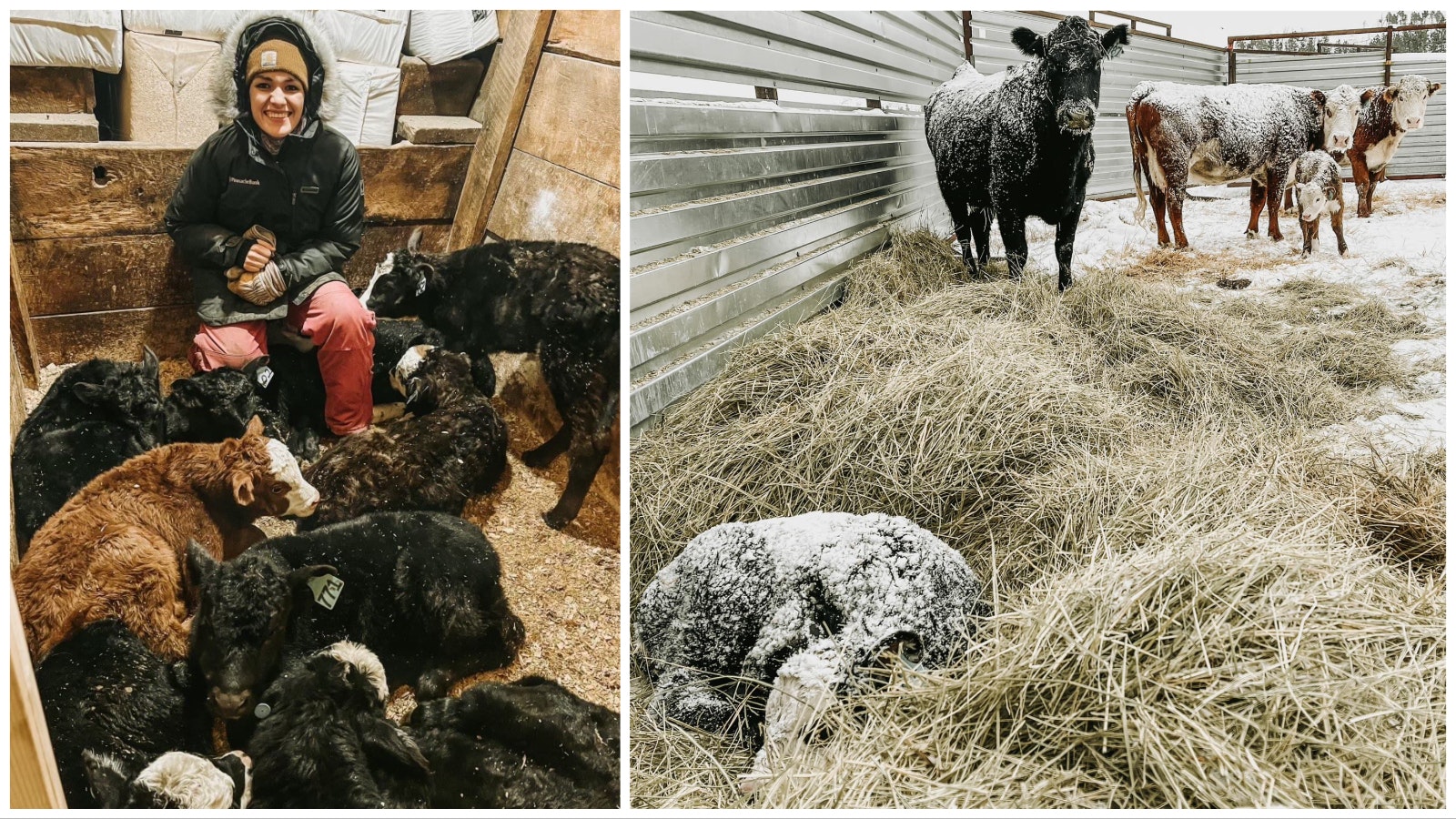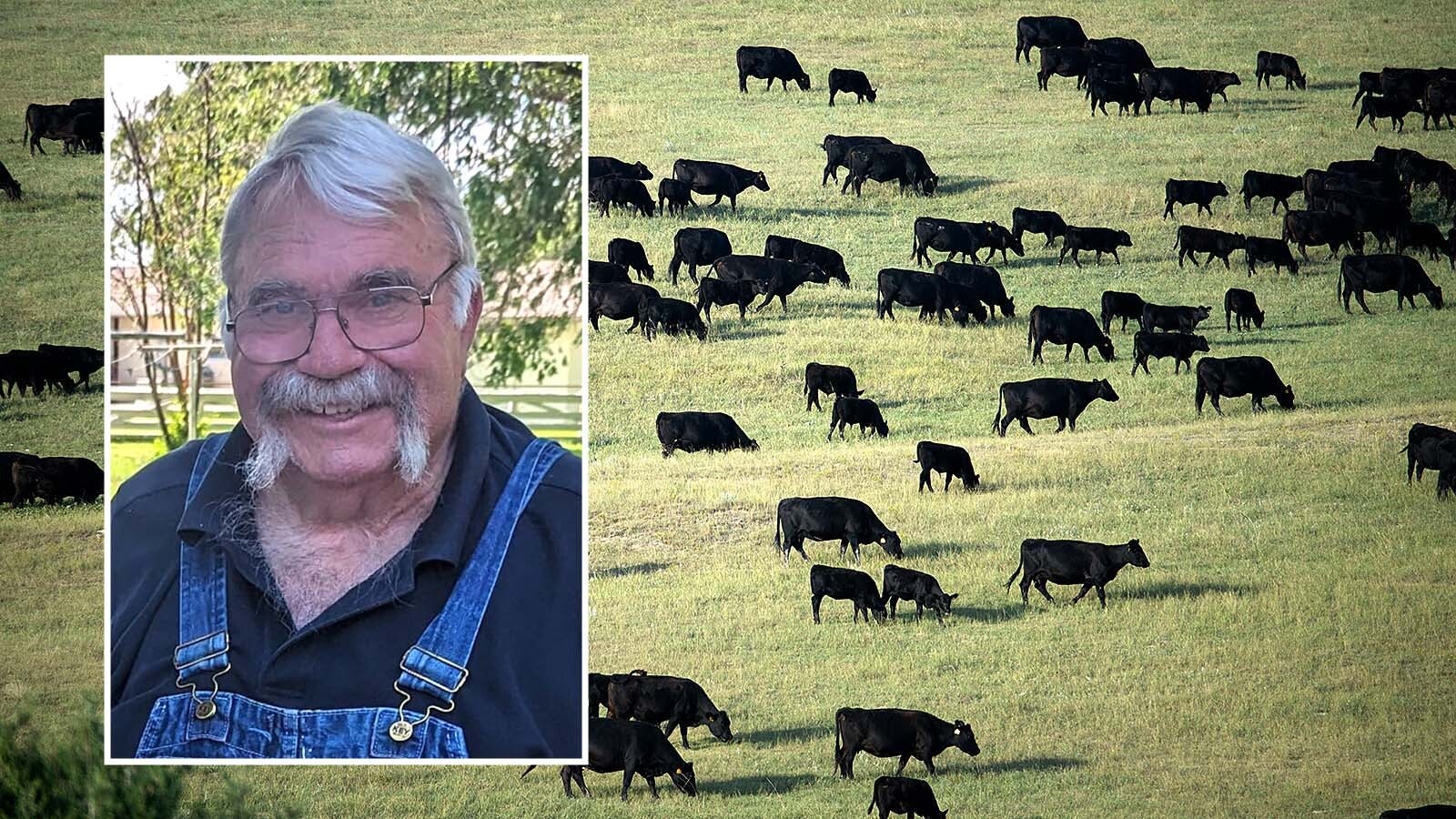When blizzards hit Wyoming, it often heralds a storm of a slightly different kind for cow-calf operations.
“When the storms are coming and the pressure’s dropping, that’s when the moms like to have their calves,” Laura Duchsherer told Cowboy State Daily. “It never seems to be when it’s a sunny day. It’s always when it starts getting colder and the weather gets crappy. That’s when they like to decide it’s time to have their babies.”
That makes things interesting sometimes on the Tavegia Ranch near Osage, Wyoming, where Duchsherer has helped the family of her boyfriend, Taylor, the past four years on a fourth-generation officially designated Centennial Ranch.
A couple of Wednesdays ago when a big snowstorm was plowing through Wyoming, about 20 calves dropped in just one 24-hour period.
The impending storm — both snow and baby calves — earned Duchsherer an early out from her job at Pinnacle Bank that day so she could hustle back to the ranch ahead of the storm that later turned into a blizzard.
Duchsherer’s work recently shared a photo of her sitting with what looks like a litter of nearly 10 newborn calves, which sort of resembled giant cute kittens, all snuggled in tightly together in a small, wooden pen.
Duchsherer sat among them in her fluffy coat and hat with a happy, if tired, smile.
“When it’s cold outside and we don’t have room in the barn, we just put them all in there, and it becomes a little calf haven,” Duchsherer said. “So, I just like to go in there and hang out with them sometimes.”

Constant Battles With Weather
When it’s cold, the Tavegias bring cows that are about to calve back to the barn where it’s a little bit warmer, Duchsherer said.
“When you do this every day, you can kind of tell the signs,” she added. “Some of them have, I call it a tail kink. They just hold their tail a certain way.”
Other moms, however, are really good at hiding all the signs of an impending birth. The herd has to be checked regularly to catch those.
“We just try to check every two hours,” Duchsherer said. “So, if there is something born, you know, within that first half hour after we’ve just checked, usually they will be able to survive at least the next hour and a half until somebody’s out there again looking.”
The family all take different shifts so that someone is checking on the moms and calves around the clock, 24-7.
It’s important, particularly when it’s very cold, for the calves to get some nutrition right away, Duchsherer said.
“The cows, they produce colostrum at the very early stages after the calf is born,” she explained. “If they don’t get that colostrum, then the babies won’t survive. They need that, it just has the nutrients to enable them to fight off diseases and everything like that.”
First 12 Hours Critical
Ideally, each calf will get some colostrum within the first 12 hours.
“If it’s a little bit longer, sometimes it’s OK and sometimes it’s not,” Duchsherer said. “But if they just absolutely won’t get up, they have like a colostrum supplement or replacement, and we can just bottle feed them that.”
This is generally avoided as much as possible, though.
“We try to get them on their mom, because that’s their best chance of surviving once they go out and it’s cold,” Duchsherer said. “But if we think they just need a little extra something in their bellies we definitely feed them.”
That can get to be a lot, she added, particularly when there have been a lot of births at once, but, despite the stress, there’s also a sweet feeling.
“To me, it’s one of the best feelings ever,” she said. “You just sit there and work with them and you know, just try to get the taste in their mouth. And then if they just start sucking that, you know then that they’re probably going to make it.”

Snow Seen As Blessing
Calving season starts in January at the Tavegia Ranch, and it won’t be over until the end of March. By the end of calving season, everyone’s getting a little tired and cranky. They’re ready for a more normal sleeping pattern, and for warmer weather.
The snow that’s making things cold and miserable right now, though, is not seen as a curse on the ranch.
“It’s a blessing,” Duchsherer said. “Not right now, but come spring, you know, the ground will have moisture. So hopefully again, we’ll be able to make most of the hay we need. So we call (snow) the grass tax. It’s what we pay to get the grass.”
That snow tax has become fairly important lately, with prices for hay and fuel increasing far faster than the prices ranchers are getting paid for their cattle.
“That’s why, when it’s as cold as this, we have to make sure we’re out there with them just 24/7,” Duchsherer said.
The more babies that survive, the more likely the ranch can keep up with its expenses, come what may in the marketplace.
In April, the Tavegias will start branding, and then the calves will go out to pasture for their first summer of life.
“All summer, we’ll make hay,” Duchsherer said. “Then fall work starts once it starts cooling down a little bit, and the cycle just repeats itself.”





